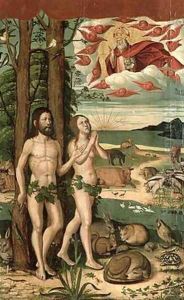Pere Mates Paintings
Pere Mates was a Spanish Renaissance painter and engraver, born in 1511 in the city of Barcelona, Catalonia. He flourished during a period when Spain was witnessing a significant cultural and artistic transformation, which was part of the broader Renaissance movement that swept through Europe.
Mates was primarily known for his religious works and portraits. He trained under the guidance of local Catalan artists and possibly traveled to Italy to study the Italian masters, which was a common practice among artists of his time seeking to absorb the principles of Renaissance art. His work shows the influence of the Italian Renaissance with its emphasis on proportion, human anatomy, and perspective, but also reflects the particular characteristics of the Spanish artistic tradition.
Unfortunately, the details of Mates' life are not as well-documented as some of his contemporaries, and many aspects of his biography remain obscure. What is known is that he established a workshop in Barcelona and received commissions from various religious institutions. His paintings often depicted scenes from the life of Christ, the Virgin Mary, and the saints. He was also known for his altarpieces, which combined intricate architectural elements with a deep sense of spirituality.
Mates' work contributed to the development of the Catalan School of painting, and he was one of the notable artists in Barcelona during the mid-16th century. His style showed a blend of Gothic and Renaissance elements, which was typical in Spain where the transition between the two styles was gradual and overlapped considerably.
The exact date of his death is not universally agreed upon, but it is believed that Pere Mates died in 1576. His legacy lives on through his contributions to Spanish art, and his works can be found in museums and collections that specialize in Spanish Renaissance art. Despite the scarcity of biographical details, Mates' body of work provides valuable insight into the cultural and artistic milieu of 16th-century Spain.
